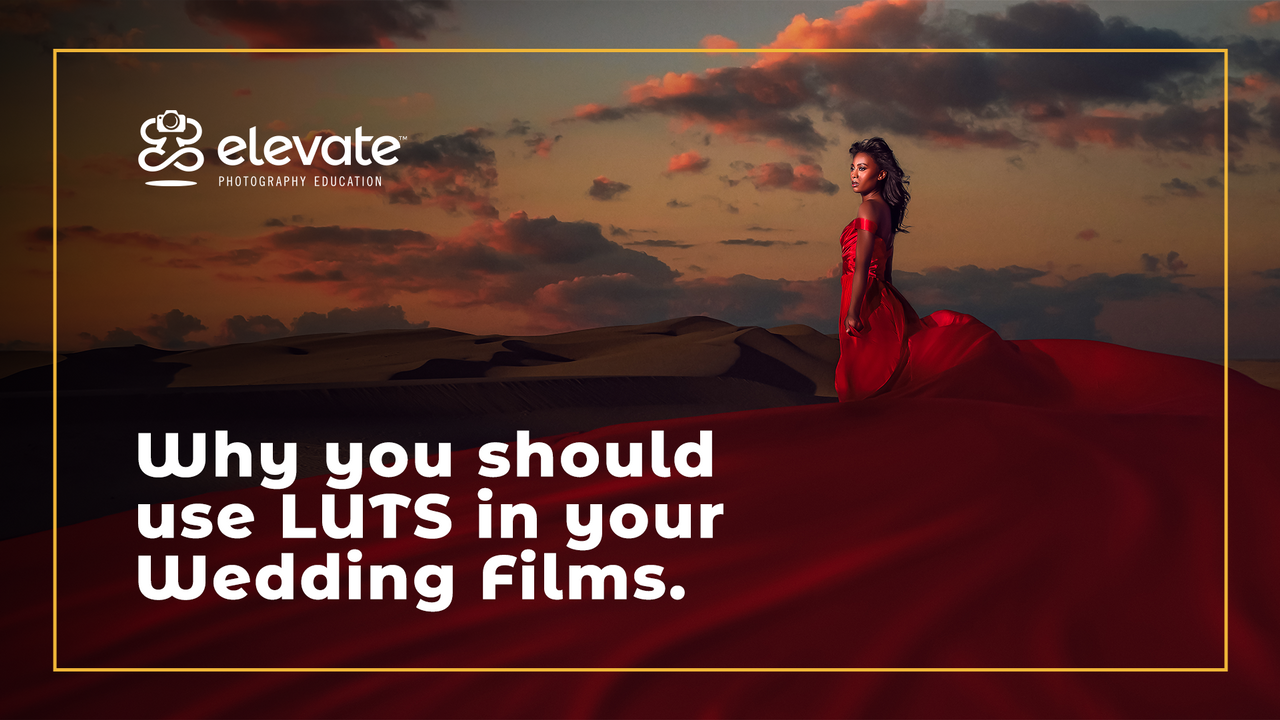Why you should use LUTS in your Wedding Films

by Demothy Tien
As a wedding filmmaker, clients expect 3 key things. Speed, consistency, and quality. This is why you need to be using LUTs in your wedding films. LUT let you meet all three of these expectations when used correctly. But how? Well before we get into that, it’s important that we cover what exactly a LUT is.
What’s a LUT?
LUT is short for “lookup table.” When talking about color grading LUTs, they take color input values and convert it to your desired look. It mathematically takes specific color values and modifies them into new ones for the footage you’re working with.
LUTs are essentially color grading presets. Much like how you use presets for accomplishing different transitions or effects, or different color presets in Lightroom to edit photos, LUTs are presets that let you achieve a specific look in your video.
Why use LUTs?
Why not? LUTs offer a ton of benefits to your editing workflow. It provides you with speed and consistency. Your clients are coming to you based on work they’ve seen. More likely than not, they like the style of your content. If clients like your style and the look of your videos, why change it? You want your content to be consistent. Inconsistency in your work will translate into an amateur looking portfolio.
You want to be able to deliver your products in a timely manner. If you can’t deliver on time, that translates to unhappy clients. And aside from the ability to deliver on time, improving your workflow will simply make your life easier. Instead of having to move sliders for 20 or 30 minutes for every video, you can simply click a button and apply the look you want. This saves you TONS of editing time. Improving your workflow lets you take on more clients, which means more money for you. So why wouldn’t you want to use LUTs?
The downsides
Now obviously LUTs aren’t perfect. You shouldn’t rely solely on presets to take over for your creative decision-making process. What’s more, for LUTs to work effectively, you need to make sure everything else in the shooting process is done correctly. That means having proper exposure and white balance. And if your lighting is poor, your footage will look bad no matter what you’re doing. LUTs won’t save bad footage.
How to get started
There are tons of ways to get started with LUTs. You can obviously purchase or download LUT packs off the internet or through your favorite content creators. Installing them and getting started is easy. Using those LUTS really depends on what editing software you use.
But what if you want to make your own? There’s a few different ways to go about this, but for the purposes of this article, I’m going to use Adobe Photoshop.
Step 1: First, you want to import a high-res still from your video project into Photoshop.

Step 2: Create an adjustment layer. This adjustment layer is where you’ll want to grade your image. You can create as many adjustment layers as you need for your edits. I usually like to make adjustments to the curves and color balance. Make whatever adjustments you want and once you’re done…

Step 3: Export the Lut. You’ll want to go to File > Export > Color Lookup Tables.
Photoshop will give you a few options when you export. First, it’ll ask you to name your LUT. Give it whatever name you like. The most important options are the quality and format options.
The “medium” quality preset should give you a decent balance between load time and quality. You’ll want to experiment here to decide exactly what quality works best for you. Keep in mind the quality you export your LUT in will drastically affect performance when using it. Choosing the “maximum” preset for instance will be incredibly heavy and result in choppy timeline performance.
Once you pick your quality, you want to save your LUT as a “cube” file. That’s it! Your LUT is ready to use in the editing software of your choice.

Conclusion
As you can see, making and using LUTs when editing videos is incredibly simple and easy. Once you’ve made a few, they’ll save you tons of time color grading and will give you a nice unified look across projects. LUTs aren’t just great for video either. You can really use LUTs across multiple platforms such as Lightroom and Photoshop. They’re simply a great way to create color presets for any sort of image-based project.
Are you looking for a great way to improve your workflow and consistency when editing photos? We have a comprehensive masterclass for Adobe Lightroom that includes a ton of presets and workflow modifiers that can drastically speed up your workflow.
Check it out here: https://www.elevateyourphotography.com/offers/TQaeXdsC/checkout

